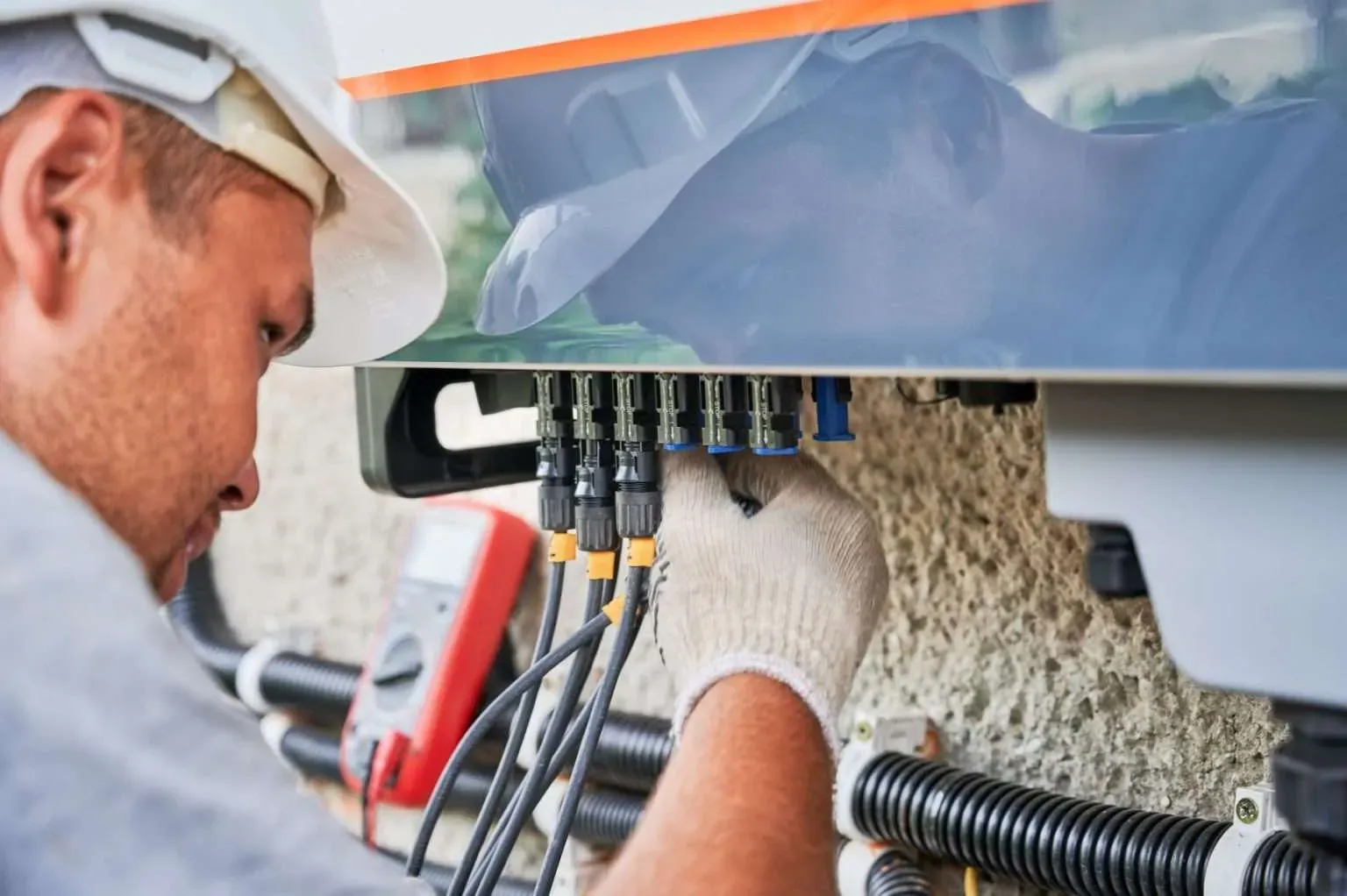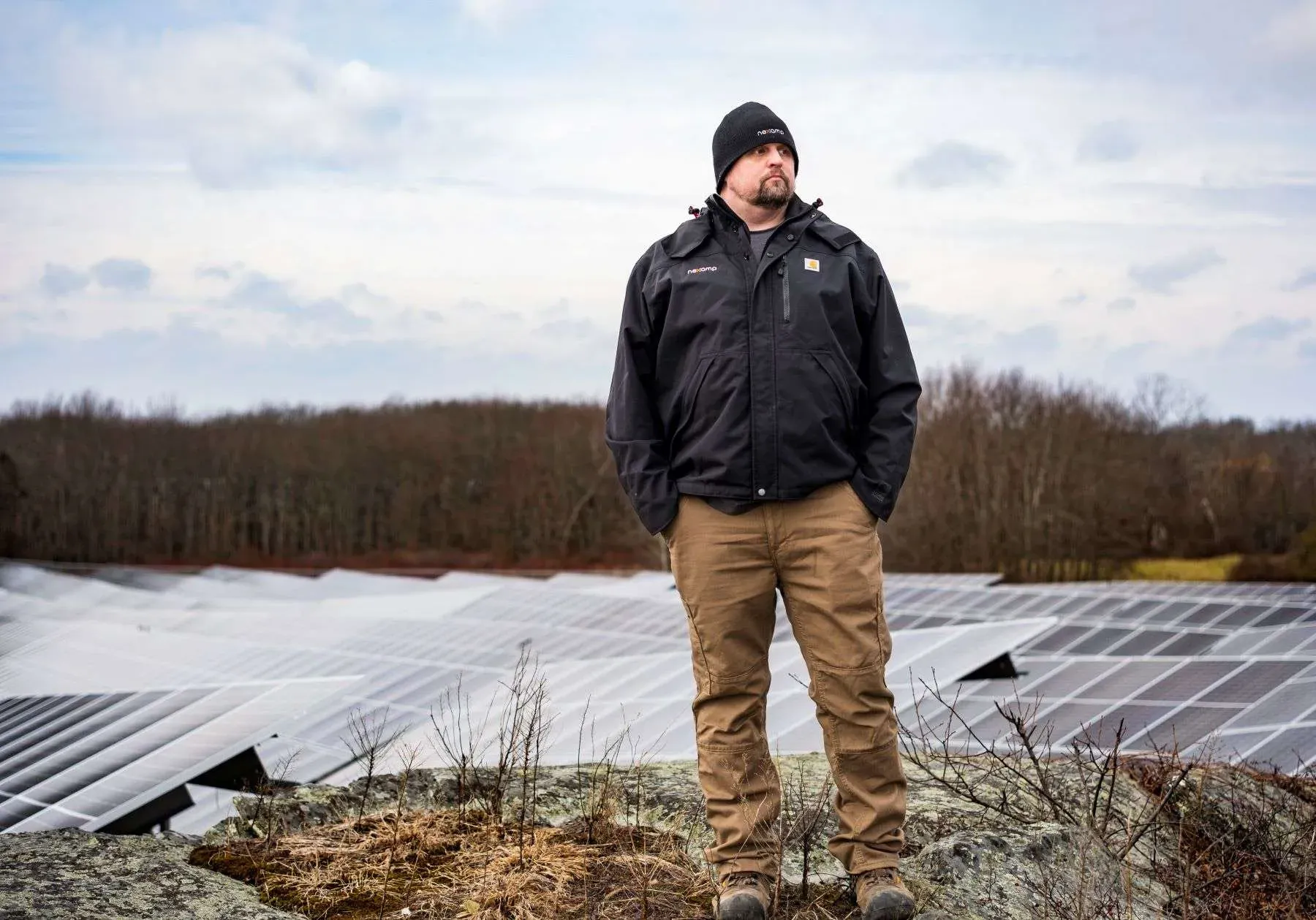What is an Electrician?
- Employer
- Job Seeker
- Trainer & Educator
- Career Descriptions
- Employment
- Renewable Energy
Learn more about experience requirements, the work environment, and advancement opportunities.
Alternate Titles
Electrician with Solar Expertise, Solar Installation Technician, Solar Installation Electrician
Apprenticeships
Electricians are eligible for a Registered Apprenticeship through the U.S. Department of Labor (DOL). Visit the DOL website to learn more about the apprenticeship occupation for an Electrician. The DOL website also lists many sub-fields that electricians can specialize in.
Education and Experience
A high school diploma, a GED, or the equivalent is preferred, but not necessary. To become an electrician, individuals may:
- Complete a Registered Apprenticeship Program.
- Complete an electrical construction technology certificate or degree program.
- Choose a combination of on-the-job learning and self-study.
Salary Range
$60,000–$63,000/year1

Electricians install, maintain, and repair electrical wiring, equipment, and fixtures for a multitude of electrical technologies. These jobs may include solar, wind, hydropower, and geothermal systems; energy storage systems such as batteries and backup generators; EV chargers and heat pumps; energy efficiency systems such as lighting upgrades and building automation; and industrial facilities maintenance. Electricians may specialize in one or more of these technologies.
Electricians hold a wide variety of jobs depending on the technology they work with, whether they work in residential or commercial sectors, and whether they work for a small or large contractor. They ensure that all their work complies with electrical and building codes.
Licensed electricians are in high demand. As clean energy solutions become more popular, many more growing businesses are looking for skilled electricians. This is an outstanding opportunity to launch a challenging and fulfilling career.
The Job
As an electrician, daily tasks may include:
- Read blueprints and sketches to locate wiring and electrical equipment. Plan the layout and installation of electrical wiring, equipment, and fixtures based on job specifications and local codes.
- Install electrical conduits, pipes, or tubing into a variety of different areas. Connect wires by performing wire or cable pulls through conduits to connect circuits.
- Work on a variety of different locations, including roofs, scaffolds, and ladders. Use a variety of tools while working including power tools, measuring devices, testing devices such as multimeters, and power construction equipment.
- Assemble, install, test, maintain, and repair electrical wiring, equipment, appliances, apparatus, and fixtures.
- Work as part of a team to manage and train other employees.
- Engage in physically demanding work, including climbing ladders, lifting heavy objects, or digging trenches.
More information on job tasks for an Electrician can be found on the U.S. Department of Labor O*Net web page.

High-Demand Job
With the growing need for clean electricity, there is a huge demand for electricians. In the next 10 years, about 21 percent of electricians will be at retirement age, increasing the demand for electricians by 7 percent.
Career Pathways and Advancement
Apprentices become Journey-Level Electricians upon the completion of the apprenticeship. Journey-Level Electricians may be promoted to Site Supervisor or Project Foreman, and many states have options to advance from journey-level to master-level with additional training and experience.
Electricians may have the opportunity to move into related occupations such as an Electrical Inspector, which requires code training, additional licensure, and certification. Gaining additional licensure and becoming a Solar Installation Contractor is another advancement opportunity. A teaching credential or additional training could lead to an Instructor position.
For more information about career advancement opportunities and paths, visit the IREC Solar Career Map.

Advancing in Your Career
Jeffrey served in the military for 13 years before joining an apprenticeship program as a solar operations and maintenance technician.
Work Environment
Both indoors and outdoors in a variety of weather conditions. Electricians may work in customers’ homes (both single-family and multifamily), commercial buildings, industrial facilities, manufacturing plants, or utility-scale power plants.
Certification and Licensing
In most states, an electrical license is required. Based on the state, electricians need to reach a certain amount of hours of work experience before they are eligible to take the licensing exam. Other certifications, such as the OSHA 10-hour or 30-hour certification, may also be required or recommended.
Industry-specific certifications help to identify specific areas of knowledge, and may be required for employers to obtain state rebates. Certifications may include the North American Board of Certified Energy Practitioners (NABCEP) PV Installation Professional (PVIP) and the Electrical Vehicle Infrastructure Training Program (EVITP).
Tips for Entry
To get a foot in the door, consider applying for entry-level positions at construction companies that have electrical work as part of their portfolio. Individuals can start an electrical apprenticeship or find out how their work experience can count toward hours to qualify for a licensing exam.
Connect Now
Ready to take the next step? Make connections with employers and training providers on Green Workforce Connect.
- Wage data is based on information in the IREC solar career map. Information on the methodology can be found here.